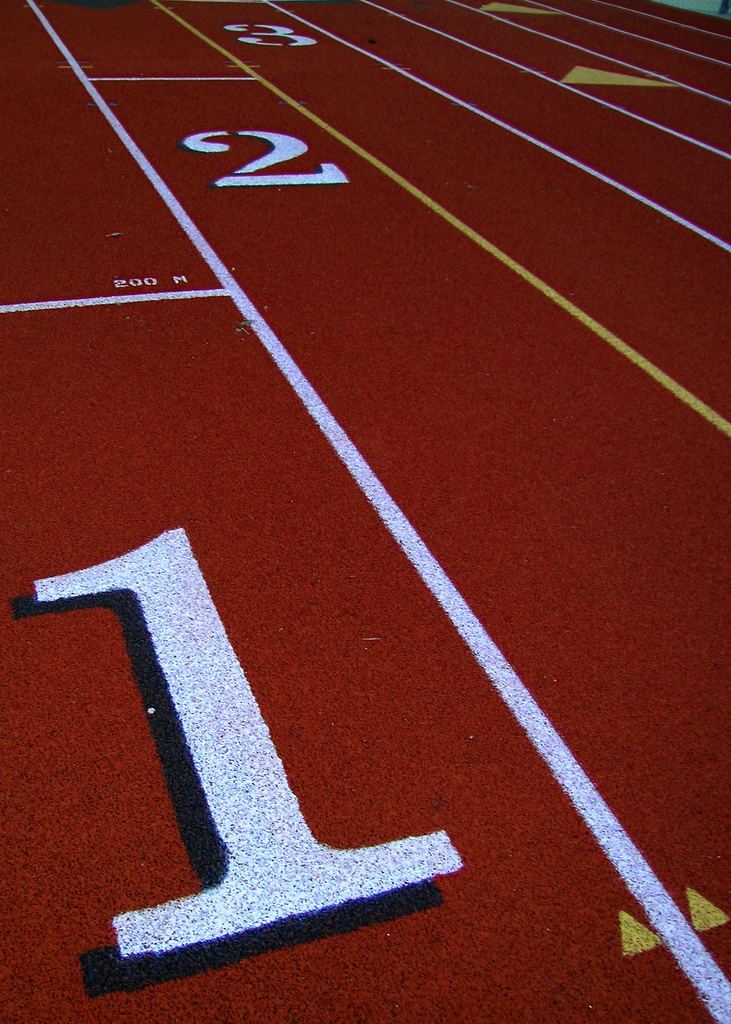 | ||
Tartan Track is a trademarked all-weather synthetic track surfacing made of polyurethane used for track and field competitions, manufactured by 3M. It lets athletes compete in bad weather without serious performance loss (as opposed to running in what turns into mud) and improves their results over other surfaces. It also provides a more consistent surface for competition even under optimum weather. Such tracks have become the standard for most elite competitions.
Contents
Because the "Tartan" brand name was the first and was widely successful in its time, the name Tartan has been incorrectly used as a genericized trademark for description of an all-weather running track.
3M's first generation artificial turf of the late 1960s and early 1970s was branded as "Tartan Turf."
History
The 1968 Summer Olympics at Mexico City was the first Olympic Games to use the Tartan track surface in athletics. Olympic shot put champion Bill Nieder was instrumental in developing the product and selling it for use in the Olympics.
American track and field coach Bert Bonanno, who had been recruited by the Mexican Olympic Committee to help prepare their athletes, worked as a liaison between the Mexican officials and manufacturer 3M in 1968. “It had been red cinder at the Olympic Games up until then. 3M hired Jesse Owens to assist them to convince the Mexican Olympic Committee to put that track in,” Bonanno said.
A Tartan track was constructed for the men's U.S. Olympic Trials at Echo Summit, California, west of South Lake Tahoe. Just off U.S. Route 50, it was built in the summer of 1968 in the parking lot of Nebelhorn ski area, at an elevation of 7,377 feet (2,249 m). It was removed and relocated to a junior high school in South Lake Tahoe.
The original trade name "Tartan" came from 3M, manufacturers of Scotch Tape and continuing the Scotch name tradition. Those original tracks required mercury as a catalyst, later found to be an environmental hazard. An independent company has perfected the process without mercury. There are now numerous competitors in the "all-weather track" industry. In fact, the "Tartan" tracks of the late 1960s were the second generation of all-weather track surfacing. Before that, there were several tracks constructed of rubber (usually tire shavings) and asphalt. The first recorded use of a Tartan Track surface in competition in England was a long jump at the Norman Green Sports Centre in Solihull, September 16, 1967, though there were earlier uses in the United States.
Spikes
Only shoe-spikes which cause minimal damage to the surface are allowed to be worn on Tartan and other artificial tracks. The most common specification is that spikes be of "Pyramid" shape and do not exceed 6 mm (1/4 inch) in length. However, every track has the right to set its own requirement and spikes may be checked by clerks or officials, resulting in penalties for athletes who wear non-conforming footwear.
These criteria also apply to the fixing spikes for sprinters' blocks.
Marks
Because of the porous and self-draining nature of some tracks, athletes are not allowed to use materials such as sand, chalk or talc to make marks on the surface. These substances clog the pores and encourage mold and moss growth.
It is preferred that tracks are not marked. Many track hosts hand out small objects like tennis balls cut in half to provide for necessary temporary marks. Marks made using adhesive tape or duct tape might give the best adhesion, but those marks also leave a resistant residue if they are not removed quickly. In very wet conditions it is common for athletes to secure their marks with a small safety pin, although this may be in breach of track regulations. Pins should, of course, be removed after the competition.
